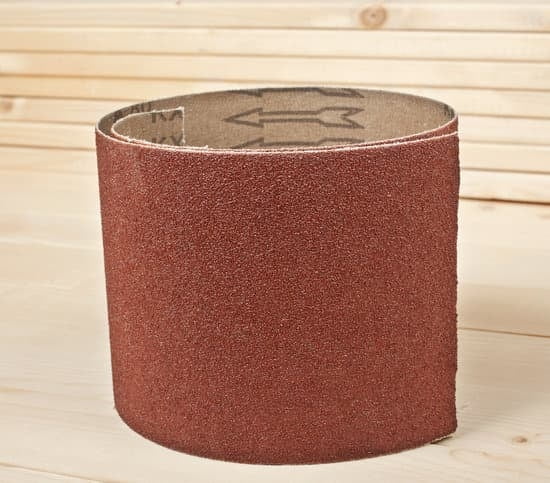A woodworking router is a versatile and essential tool in the world of woodworking. Whether you are a beginner or an experienced woodworker, understanding the role of a woodworking router and its significance in various projects is crucial for achieving professional results. From shaping edges and creating intricate designs to cutting grooves and making joints, the woodworking router offers endless possibilities for creative craftsmanship.
There are different types of woodworking routers available in the market, each designed for specific functions and projects. Understanding the differences between these types is important when choosing the right tool for your woodworking endeavors. Factors such as horsepower, speed control, and base type play a significant role in determining which router is best suited for your needs.
In addition to selecting the right woodworking router, safety should always be a top priority when operating this powerful tool. Implementing proper safety precautions and guidelines is essential to prevent accidents and ensure a smooth and secure woodworking experience. With the right knowledge and techniques, utilizing a woodworking router can open up a world of possibilities for both basic and advanced woodworking projects.
Types of Woodworking Routers
When it comes to woodworking routers, there are various types available in the market, each with its unique features and capabilities. Understanding the different types of woodworking routers can help you make an informed decision when choosing the right one for your specific projects. Below is a detailed overview of some of the most common types of woodworking routers:
- Fixed Base Router: This type of router has a base that is fixed in place, making it ideal for tasks that require precision and accuracy, such as edge profiling and dado cutting.
- Plunge Router: Unlike the fixed base router, a plunge router allows the user to adjust the cutting depth while the motor remains in a stationary position. This makes it suitable for tasks like mortising and intricate design work.
- CNC Router: A CNC (Computer Numerical Control) router is a high-tech option that uses computer software to control its movements. It is perfect for complex designs and intricate patterns.
- Trim Router: As the name suggests, a trim router is used for trimming and shaping edges. It is lightweight and easy to handle, making it suitable for tasks that require precision and control.
It’s important to consider the specific needs of your woodworking projects when selecting a router. Factors such as power, speed control, and ergonomic design should all be taken into account. Additionally, understanding the capabilities of each type of router will help you determine which one would best suit your needs.
In addition to these common types of woodworking routers, there are also specialty routers designed for specific tasks such as dovetailing or sign-making. Before making a purchase, it’s advisable to do thorough research on the various options available in order to make an informed decision based on your project requirements and budget constraints.
Choosing the Right Router for Your Project
When it comes to selecting a woodworking router for your project, there are several factors to consider in order to ensure you choose the right tool for the job. The type of woodworking router you need will largely depend on the specific requirements of your project and the materials you will be working with. Here are some key factors to keep in mind when choosing a woodworking router:
Project Requirements
Consider the specific needs of your project, such as the type of cuts and edges you will be creating, as well as the size and intricacy of the workpiece. Different routers have varying capabilities and features, so it’s important to match the tool with the demands of your project.
Power and Speed
The power and speed of a woodworking router are crucial factors to consider. For larger, more demanding projects or working with harder materials, you may require a router with higher horsepower and variable speed settings to accommodate different cutting tasks.
Router Base
The base of a woodworking router is another important consideration. Different bases, such as fixed or plunge bases, offer distinct advantages depending on the type of cuts you need to make. Consider the versatility and stability of the base for your specific project requirements.
By carefully evaluating these factors and understanding your project needs, you can make an informed decision when choosing a woodworking router that will best serve your woodworking endeavors.
Essential Safety Tips When Operating a Woodworking Router
When using a woodworking router, it is crucial to prioritize safety to prevent accidents and injuries. Whether you are a beginner or an experienced woodworker, understanding and implementing essential safety tips when operating a woodworking router is paramount. Here are some important guidelines to follow to ensure safe usage of a woodworking router:
- Wear Personal Protective Equipment (PPE): Always wear eye protection, hearing protection, and appropriate clothing when operating a woodworking router. This will help safeguard against wood chips, dust, and noise.
- Secure Workpiece: Ensure that the workpiece is properly secured using clamps or vises before routing. This prevents the piece from moving unexpectedly during routing, reducing the risk of accidents.
- Use Router Safely: When turning on the router, make sure it is placed securely on the workpiece and not in contact with it. Additionally, avoid reaching around or over the running bit to reduce the risk of accidental contact with the cutting tool.
By adhering to these safety precautions and guidelines, woodworkers can minimize the likelihood of accidents and promote a safe working environment when using a woodworking router.
It is important for individuals at all skill levels to be aware of these safety measures and incorporate them into their woodworking practices. Whether you are embarking on simple projects or tackling complex designs with a woodworking router, prioritizing safety should remain a top priority throughout your woodworking journey.
Basic Router Techniques
Woodworking routers are versatile tools that can be used for a wide range of woodworking projects. When it comes to basic router techniques, there are several essential methods that every woodworker should master to unleash the full potential of this tool.
Edge Cutting
One of the most basic and commonly-used techniques with a woodworking router is edge cutting. This technique involves using the router to trim the edges of wood pieces to create clean, smooth edges. This is commonly used for making straight cuts along the length of a board or creating decorative edges on furniture and cabinetry.
Rabbeting
Rabbeting is another fundamental router technique that involves cutting a step-shaped recess along the edge or end of a workpiece. This technique is often used in joinery and cabinetry work to create strong, seamless joints between pieces of wood.
Router Template Guide Bushing
Using a template guide bushing with a woodworking router allows you to follow a pattern or template to create precise, repetitive cuts. This technique is ideal for creating intricate designs, inlays, and patterns on wood surfaces.
By mastering these basic router techniques, woodworkers can achieve professional-level precision and craftsmanship in their projects. Whether it’s creating clean edges, precise joints, or intricate designs, understanding and practicing these essential techniques will enhance the versatility and capability of a woodworking router in various applications.
Advanced Router Techniques
When it comes to woodworking projects, a woodworking router is a versatile and essential tool. It can be used for a wide variety of tasks, from shaping edges and creating intricate designs to cutting joinery and hollowing out grooves. In this section, we will explore some advanced techniques that can be achieved using a woodworking router.
One advanced technique that woodworkers often use with a woodworking router is the creation of inlay patterns. By carefully removing wood in specific areas and fitting inlays into those spaces, intricate designs and patterns can be achieved. This technique requires precision and attention to detail but can result in stunning and unique woodworking pieces.
Another advanced technique is the use of template guides and jigs. These accessories allow woodworkers to replicate complex shapes and patterns with ease. By attaching a template to the workpiece or using a jig as a guide, woodworkers can create precise and consistent cuts that would be difficult to achieve freehand.
Dovetail joints are another advanced technique that can be achieved with a woodworking router. Dovetails are commonly used in cabinetry and furniture making for their strength and aesthetic appeal. With the right router bit and careful technique, woodworkers can create perfectly fitting dovetail joints that elevate the quality of their projects.
| Advanced Router Techniques | Woodworking Projects |
|---|---|
| Inlay Patterns | Creating intricate designs with precision |
| Template Guides and Jigs | Replicating complex shapes and patterns |
| Dovetail Joints | Creating strong and aesthetically appealing joints |
Maintenance and Care of Woodworking Routers
Woodworking routers are essential tools for creating intricate designs, edges, and joinery in woodworking projects. Whether you are a beginner or a seasoned woodworker, understanding the maintenance and care of your woodworking router is crucial in ensuring its longevity and optimal performance. By following some simple tips and guidelines, you can keep your router in top condition for years to come.
One important aspect of maintaining a woodworking router is keeping it clean. Sawdust and wood chips can easily build up in the motor and other components of the router, leading to decreased performance and potential damage. After each use, it is important to thoroughly clean the router with a brush or compressed air to remove any debris. Additionally, regular lubrication of moving parts with an appropriate oil will help prevent wear and tear.
Ensuring that the router bits are sharp and well-maintained is also essential for its proper functioning. Blunt or damaged router bits not only affect the quality of your work but can also put unnecessary strain on the motor. Regular sharpening and careful storage of router bits can significantly extend their lifespan and contribute to the overall performance of your woodworking router.
| Maintenance Tips | Care Guidelines |
|---|---|
| Regularly clean the router using a brush or compressed air | Avoid exposing the router to excessive moisture or humidity |
| Lubricate moving parts with an appropriate oil | Store the router in a dry and dust-free environment when not in use |
| Regularly sharpen and maintain the condition of router bits | Check for any signs of wear or damage before each use |
Project Ideas Using a Woodworking Router
In conclusion, a woodworking router is an incredibly versatile and essential tool for any woodworking enthusiast. Whether you are a novice or an experienced woodworker, the right router can greatly enhance the quality and precision of your projects. From shaping edges and creating intricate designs to making precise cuts and joints, the possibilities with a woodworking router are endless.
When it comes to project ideas using a woodworking router, the options are limitless. You can create beautiful custom furniture pieces such as tables, chairs, and cabinets. Additionally, you can delve into more artistic endeavors like crafting decorative wooden signs, intricate carvings, or even personalized cutting boards. With the right techniques and creativity, there is no limit to what you can achieve with a woodworking router.
Furthermore, it is important to remember that safety should always be a priority when using a woodworking router. By following essential safety tips and guidelines for safe usage, such as wearing protective gear and securing your workpiece properly, you can ensure that your woodworking experience is both enjoyable and hazard-free.
Lastly, regular maintenance and care for your woodworking router will guarantee its longevity and optimal performance for future projects. Whether you are just starting out or looking to expand your skills in woodworking, incorporating a woodworking router into your projects opens up endless opportunities for creativity and craftsmanship.

Hi everyone! I’m a woodworker and blogger, and this is my woodworking blog. In my blog, I share tips and tricks for woodworkers of all skill levels, as well as project ideas that you can try yourself.





